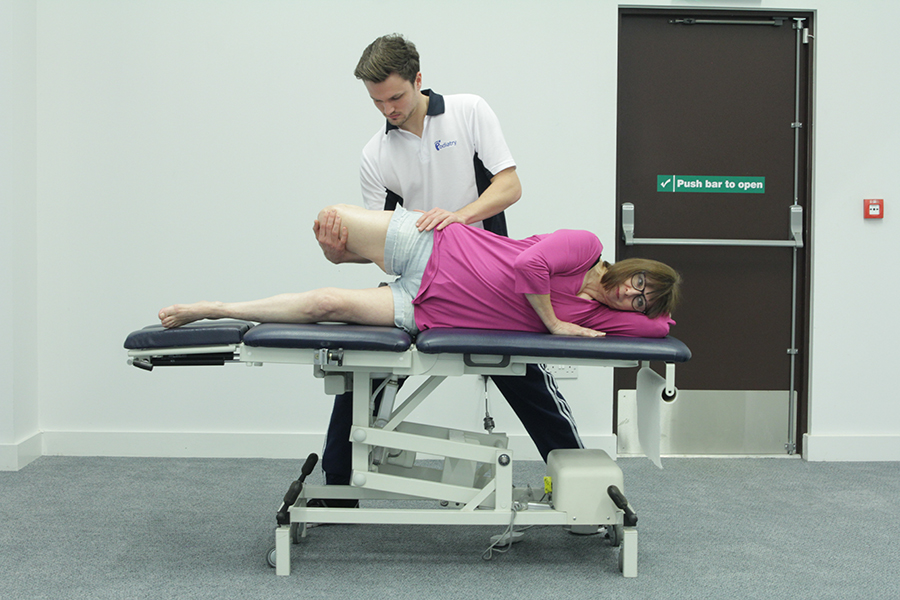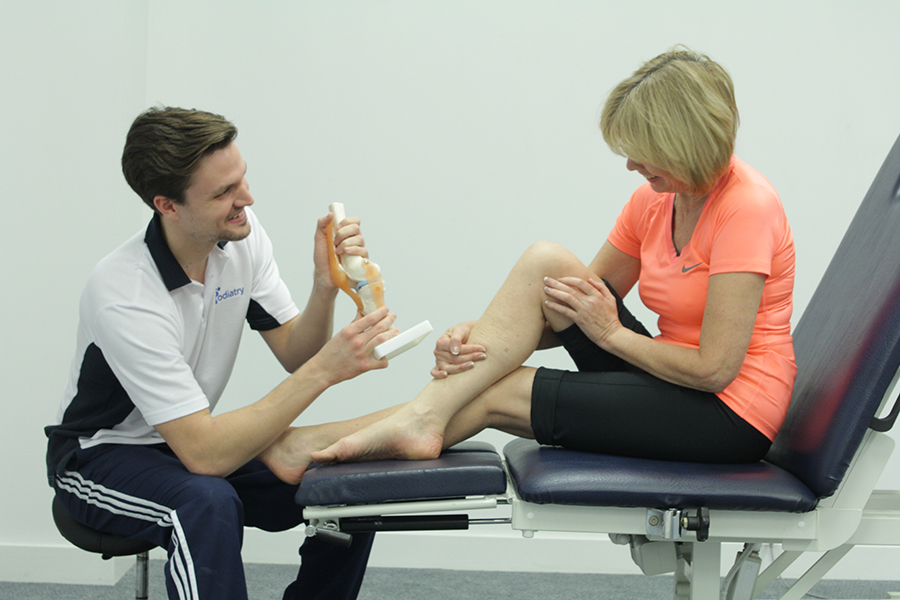Shin splints
Shin splints is an umbrella term that is used to describe pain at the front of the shin. Shin splints is an over use injury most often seen in those who participate in sporting activities.
What are shin splints?
Shin splints refers to any condition that results in pain at the front of the shin, however, the term is most often used to describe a condition called medial tibial stress syndrome. Medial tibial stress syndrome is an overuse injury characterised by pain and inflammation of the periosteum of the tibia (the tissue that surrounds the leg bone).
What causes shin splints?
The most common cause of shin splints is
Medial tibial stress syndrome
(often used interchangeably with shin splints, however, the correct
diagnosis is medial tibial stress syndrome). Medial tibial stress syndrome
is commonly seen in athletes and sports people, particularly those who have
recently increased the intensity and/or duration of their training. Medial
tibial stress syndrome is associated with over-pronation.
Over-pronation causes the arch of the foot to collapse and the foot to roll
in. When the foot flattens it places extra strain on the muscles in the
leg, and as a consequence extra stress is placed onto their attachments at
the tibia.
The pain associated with medial tibial stress syndrome is caused by
periostitis (inflammation on the periosteum). The periosteum is a type of
tissue that surrounds bone, it can become inflamed due to overuse of the
muscles in the leg which attach to the tibia (shin bone), and this then
places stress on the periosteum which becomes irritated and inflamed.
The muscle that attach to the tibia include:
- Soleus
- Gastrocnemius
- Tibialis posterior
The point where the soleus attaches to the tibia is thought to be the site
of pain associated with medial tibial stress syndrome.
Other causes of shin pain include:
- Stress fracture
- Anterior compartment syndrome
- Tibialis anterior tendinopathy

What are the signs and symptoms of shin splints?
The signs and symptoms of shin splints include:
- Pain along the inside of the shin bone at the front of the leg. The pain associated with shin splints is described as sharp and aching
- Pain that increases and gets worse with exercise
How is shin splints diagnosed?
Shin splints itself is not a diagnosis. The cause of your shin pain will be diagnosed by a podiatrist based on a thorough history, an examination and the signs and symptoms.
Benefit of podiatry for shin splints
If you have shin splints the following benefits can be achieved through podiatric assessment and treatment:
- Pain reduction
- Improved foot function
- Improved lower limb function
- Improved muscle strength
- Reduced muscle tightness
- Improved gait
- Reduced future injury risk
The exact benefits achieved will depend on the specific cause of your shin splints, and will be discussed with you at your first appointment.
What would podiatry for shin splints involve?
Podiatry for shin splints would involve obtaining a thorough history, which
is an essential component of an accurate diagnosis. The history is then
used, along with any signs and symptoms, and an examination of the foot and
leg to form a diagnosis.
Shin splints is not a diagnosis itself, it is simply a term used to
describe shin pain, therefore, one of our podiatrists will accurately
diagnose the cause of your shin pain. This might be:
- Medial tibial stress syndrome
- Tibialis anterior tendinopathy
- Stress fracture of the tibia
- Anterior compartment syndrome
Once a diagnosis has been made the following treatment options may be recommended:
- Orthoses
- Stretching Programmes
- Strengthening Exercises
- Massage
- Acupressure
- Myofascial release
- Soft tissue mobilisation
- Trigger point therapy
- Advice and education
- Ultrasound
- Footwear review
- Rest
- Anti-inflammatory advice
All treatments are specific to the individual and will be discussed with you in full.

Summary
Shin splints is a generic term that is used to describe pain at the shin.
Shin splints is often used to describe medial tibial stress syndrome, which
is the correct diagnosis and is the most common cause of shin pain.
Other causes of shin pain include; stress fracture of the tibia, tibialis
anterior tendinopathy, and chronic compartment syndrome.
If you think you have shin splints Chiropody.co.uk can help you. Our
podiatrists will devise a treatment plan specific to you, one that will aim
to alleviate any pain and inflammation, and that will improve the function
of the foot and lower limb so that the stress being placed on the muscles
is reduced.
To arrange an assessment with one our podiatrists please email office@chiropody.co.uk or call 0330 088 4222.
Save 5% by booking an appointment online.



We work with:

Individuals

Organisations

Health professionals
Get in Touch!
0330 088 4222
If you would like to speak to one of our specialists then please complete this form.
We are open 7 days a week








